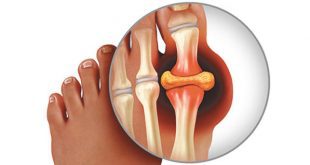By Myles Rubin Samotin, MD – Board Certified Orthopaedic Surgeon, Fellowship Trained in Foot and Ankle –


As most of us know, a tendon is an extension of a muscle and attaches itself to a bone, allowing us to use our muscles to move our bones and joints over and over again. The posterior tibial muscle becomes a tendon on the inside (medial side) of our lower leg. It then runs behind the inside ankle (medial malleous) and attaches to eight bones in the midfoot. Since all the attachments sit in the middle of the arch, this muscle and tendon help support the foot arch.
Tendons are made up of collagen fibers sort of like a rope. As we get older, tendons become worn, with individual fibers becoming inflamed, calcifying or even rupturing. This leads to the tendon weakening. As the tendon tries to heal itself from this wear and tear, scar tissue may form into a knot or nodule within the tendon called tendonosis. This area is weaker than the tendon itself and can eventually lead to a tendon rupture. If the larger area of tendonosis becomes inflamed, it becomes tendonitis.
Like most aging muscles and tendons, the posterior tibial tendon will start to wear and lose elasticity, causing the arch of the foot to start to flatten. BUT, we use this tendon with EVERY STEP WE TAKE!!! We cannot stop using it, since it is very important in ambulation. So the tendon will continue to wear and will continue to lose its ability to support the arch and the foot.
As the tendon continues to degenerate, stretch out and lose its flexibility, the foot will become flatter and flatter. Even in a short time the actual shape of the foot will change significantly. This can result in changes in ligaments, bones and tendons of the foot and the results can lead to a very painful foot.
The symptoms of tendonosis/tendonitis of the posterior tibial tendon may include pain and swelling on the inside of the ankle or midfoot, loss of the foot arch and the development of flatfoot. Other symptoms might include weakness and an inability to stand on ones toes, and/or tenderness over the midfoot, especially when under stress during physical activity. However, not everyone may have symptoms and flatfoot may continue to progress without the patient being aware of the changes occurring in his or her foot. It is for this reason that a new onset or one that is getting worse should always be evaluated by an orthopaedic foot and ankle specialist to determine if any changes have occurred in your foot.
Myles Rubin Samotin, MD
Board Certified Orthopaedic Surgeon
Fellowship Trained, Sub-specialist in Foot and Ankle Surgery
Columbia University, Maimonides Medical Center,
Hospital for Joint Diseases, New York City
239.514.4200
713 E. Marion Avenue, Suite 135
www.samotinorthopaedics.com
 Southwest Florida's Health and Wellness Magazine Health and Wellness Articles
Southwest Florida's Health and Wellness Magazine Health and Wellness Articles

